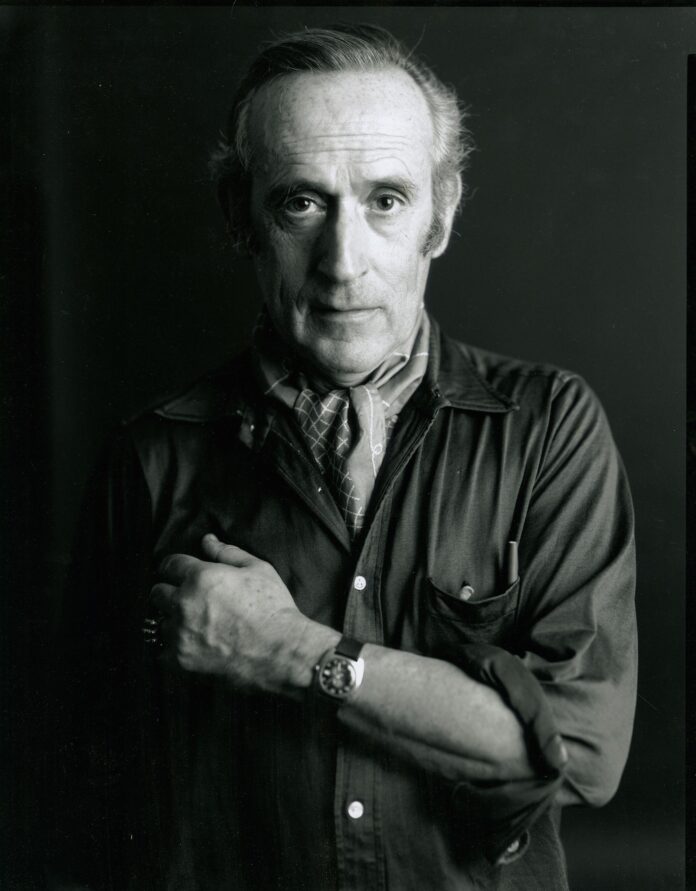Joop Sanders, the Dutch American painter who played a key role in Abstract Expressionism, has died. He was 101 years old. According to Artforum, the artist died on 6 July, and his death was confirmed by his son-in-law, the photographer Timothy Greenfield-Sanders.
Sanders came to the United States as a teenager fleeing the Nazi regime, but a brief return to Europe in the 1950s—just as the AbEx movement was gaining a solid foothold in the US—left him largely excluded from the history books. He was the last surviving artist to have exhibited at the historic 9th Street Show of 1951, an artist-run exhibition that served as something of a coming-out party for the AbEx movement and which featured the work of dozens of artists including Helen Frankenthaler, Joan Mitchell, Grace Hartigan, Philip Guston, Elaine de Kooning, Lee Krasner, Franz Kline, Barnett Newman, Robert Rauschenberg and others.

Joop Sanders, Black Witch, 1956-57 Courtesy the artist’s estate
Sanders was born in Amsterdam on 6 October 1921. As a teenager in 1939, he emigrated to the US to flee the advancing Nazi army. His family chose to stay behind, and Sanders came alone to New York City. His parents survived the war by going into hiding, while two of his sisters were interned at work camps but survived, and a third sister was killed in a concentration camp in Poland.
In 1940, Sanders enrolled at the Art Students League, where he studied for six months under the German painter George Grosz. That same year, he met Willem and Elaine de Kooning at a concert and a deep friendship formed. According to the artist’s website, Sanders was the subject of a dozen portraits painted and drawn by Elaine de Kooning throughout the 1940s. Hyperallergic described these portraits of Sanders as key to the development of de Kooning’s more mature style.

Joop Sanders, Interaction, 1964-65 Courtesy the artist’s estate
In 1949, Sanders was the youngest of the 20 artists who together founded The Club at 39 East 8th Street in Manhattan’s Greenwich Village. According to a 1965 Artforum article, the founding members included Sanders, Kline, Willem de Kooning, Milton Resnick, Ad Reinhardt and Jack Tworkov, among others. Serving as a hub for meeting and socialising as well as a grounds to hang exhibitions, stage theatre, talks and more, The Club would prove to be a vital space for Abstract Expressionists and later for the New York School of artists and writers. In December 1950, Sanders and his wife Isca Jörgensen held their wedding at The Club; the two would remain married until Jörgensen’s death in 2019.
From the mid-1950s until 1959, Sanders and his family relocated to Europe. Though he showed his work widely in Europe throughout these years—including exhibitions alongside the Zero Group in shows organised by Enrico Castellani and Piero Manzoni—this time abroad resulted in his relative exclusion from wider dialogues around the history of Abstract Expressionism, which was embraced by the American mainstream while Sanders was away. As a 1986 article in The New York Times put it, “Sanders came to New York from Amsterdam in 1939 as a teenager; ten years later, he was the youngest founding member of ‘The Club’, of those most radical painters of the day, the Abstract Expressionists. We would probably know him better by now if he hadn’t been back in Europe during the later 1950s.”

Joop Sanders, Tondo, 1983 Courtesy the artist’s estate
Upon his 1959 return to the States, Sanders moved to Manhattan’s Soho district—which had yet to evolve into the artist hotbed it would soon become—and developed a monochrome style he would continue to explore for decades, as well as “sectional” paintings, in which a single work took place across multiple panels that could be rearranged at the owner’s whim, with some able to be displayed as three-dimensional sculptures.
In 1960, Sanders was given a one-man show at the Stedelijk Museum in Amsterdam. This exhibition was an early introduction to European audiences of the American abstract style of the time. Though the Stedelijk exhibition would be the only solo show that Sanders would receive at a major museum in his lifetime, his work is held in a number of institutions throughout the world, including the Museum of Modern Art, the Philadelphia Museum of Art and the Stedlijk, among others.

























